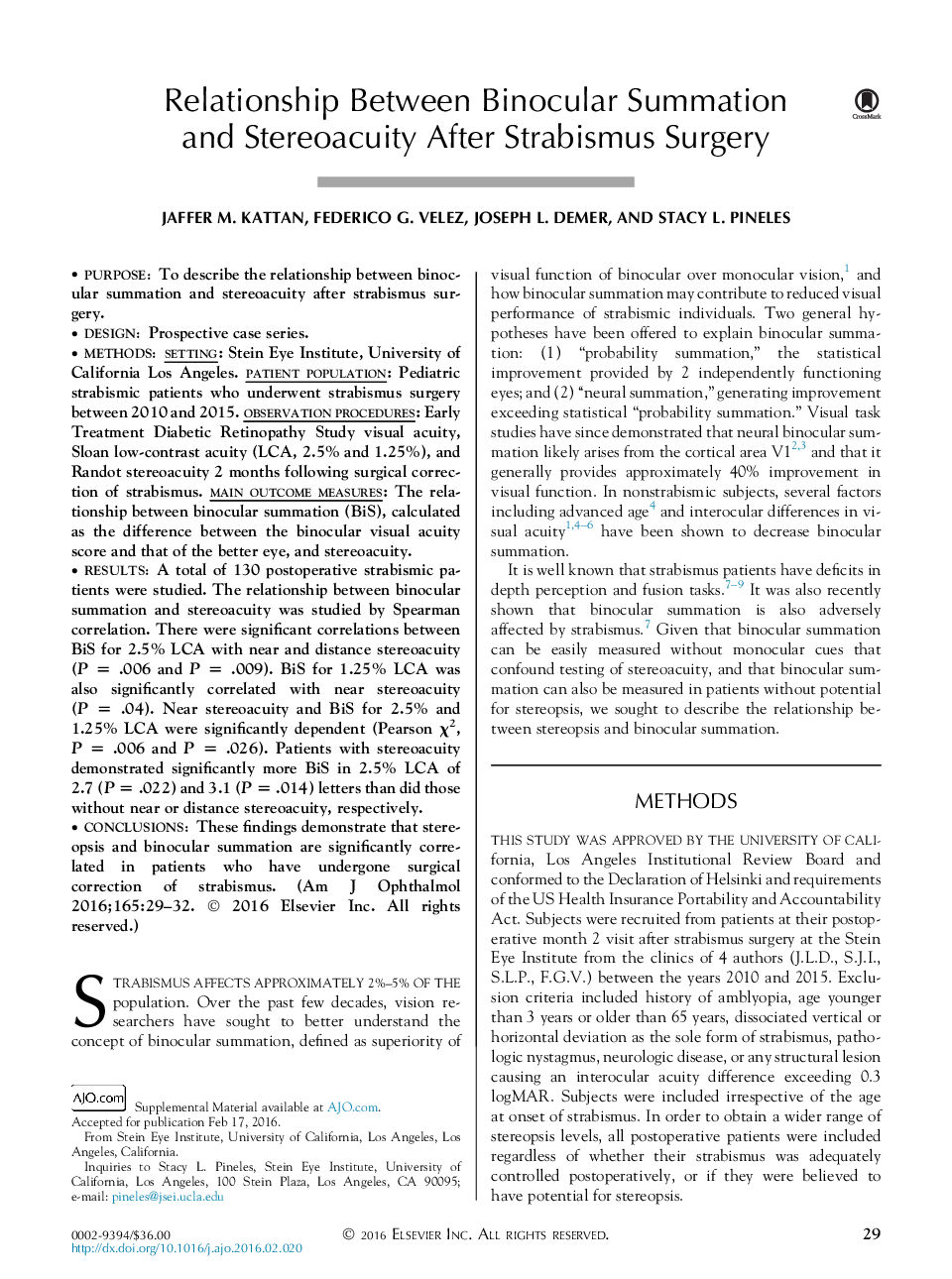| Article ID | Journal | Published Year | Pages | File Type |
|---|---|---|---|---|
| 6194933 | American Journal of Ophthalmology | 2016 | 4 Pages |
PurposeTo describe the relationship between binocular summation and stereoacuity after strabismus surgery.DesignProspective case series.Methodssetting: Stein Eye Institute, University of California Los Angeles. patient population: Pediatric strabismic patients who underwent strabismus surgery between 2010 and 2015. observation procedures: Early Treatment Diabetic Retinopathy Study visual acuity, Sloan low-contrast acuity (LCA, 2.5% and 1.25%), and Randot stereoacuity 2Â months following surgical correction of strabismus. main outcome measures: The relationship between binocular summation (BiS), calculated as the difference between the binocular visual acuity score and that of the better eye, and stereoacuity.ResultsA total of 130 postoperative strabismic patients were studied. The relationship between binocular summation and stereoacuity was studied by Spearman correlation. There were significant correlations between BiS for 2.5% LCA with near and distance stereoacuity (PÂ = .006 and PÂ = .009). BiS for 1.25% LCA was also significantly correlated with near stereoacuity (PÂ = .04). Near stereoacuity and BiS for 2.5% and 1.25% LCA were significantly dependent (Pearson Ï2, PÂ = .006 and PÂ = .026). Patients with stereoacuity demonstrated significantly more BiS in 2.5% LCA of 2.7 (PÂ = .022) and 3.1 (PÂ = .014) letters than did those without near or distance stereoacuity, respectively.ConclusionsThese findings demonstrate that stereopsis and binocular summation are significantly correlated in patients who have undergone surgical correction of strabismus.
